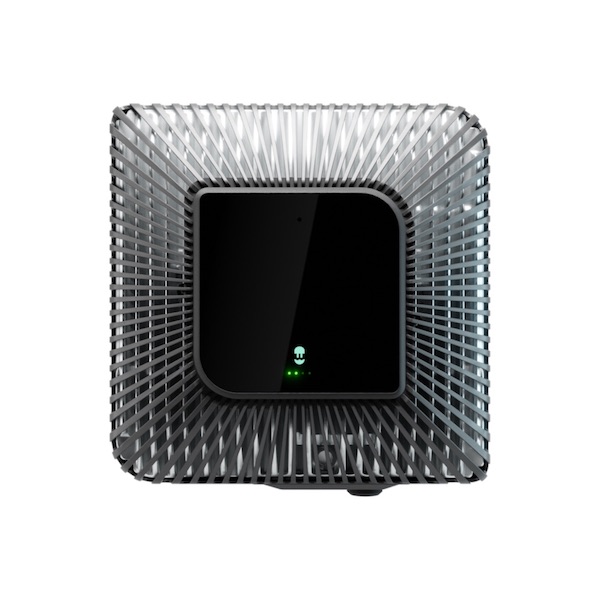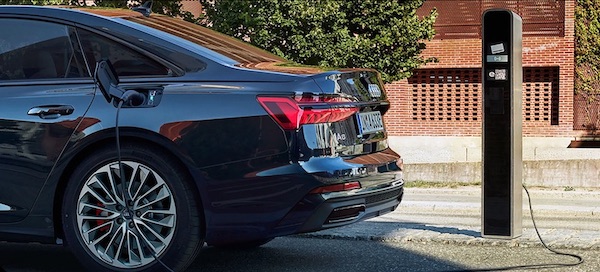Overview
Toyota Motor Corporation, known simply as Toyota, is a leading global automotive company. The company is one of the largest automobile manufacturers in the world and is headquartered in Aichi, Japan. The company has already established an enviable track record for the development and marketing of environment friendly hybrid vehicles.
Toyota has one of the largest portfolios of mild hybrid electric vehicles (MHEVs), currently 11 hybrid models. It is also a world leader in fuel cell electric vehicles (FCEVs). The company currently has a portfolio of the following fully electric and plug-in electric vehicles:
- Toyota bZ4X
- Toyota Mirai
- Toyota RAV4
- Toyota Prius
Apart from the ubiquitous Toyota brand, the company also owns the Hino, Lexus, Ranz and Daihatsu brands.
Electric Cars: The Basics
For those of you new to zero-emission electric driving, we recommend a read of the following articles:
Sign up to the e-zoomed Electric Living newsletter
The Toyota bZ4X Electric SUV
The Toyota bZ4X electric SUV was debuted in April 2021 as the ‘bZ4X Concept’. The Toyota bZ4X is the first electric vehicle (EV) to be based on the e-TNGA platform co-developed by Toyota and Subaru. It is the first pure electric SUV from the Japanese manufacturer and sales commenced in mid-2022.
Despite Toyota’s leadership in hybrid technology, the automotive manufacturer has been rather late it terms of battery-electric vehicles (BEVs). Nevertheless, despite the increased competition in the compact e-SUV/ crossover segment, the bZ4X EV has much to offer, for both families and company-car drivers. The EV is available, both as a front-wheel drive (FWD) and all-wheel drive (AWD).
Both variants are available in the same EV battery size: 71.4 kWh. For the FWD variant, Toyota claims a WLTP certified zero-emission electric range up to 317 miles. The AWD variant has a pure electric range up to 286 miles. Of course, we need to adjust for the real-world driving conditions. For the FWD bZ4X expect an electric range closer to 270 miles and for the AWD bZ4X an e-range up to 240 miles is more realistic.
The bZ4X offers DC charging up to 150 kW. Given the price tag of the EV, we would have expected a faster DC charging capability. Nevertheless, the EV can be charged 10%-80% in 30 minutes i.e. just enough time for a short coffee break and bite.
Surprisingly (and disappointingly), the bZ4X electric SUV is limited to a 6.6 kW onboard AC charger. Again, given the price tag, we would have expected a higher AC charging capability. Nevertheless, as most homes in the UK are powered by single-phase power supply, the 6.6 kW is adequate. The EV can be fully charged via a dedicated single-phase residential EV charger, like myenergi zappi in 9 hours and 30 minutes.
Yes, the EV can be charged via a 3-PIN domestic socket. However, we at e-zoomed discourage using a domestic socket for charging an electric car. We also recommend a topping up approach to EV charging. This way charging times are shorter! Moreover, regular charging is good for the long-term maintenance of the onboard EV battery. Toyota offers a class-leading 10 years or 100,000 miles warranty.
In terms of performance, the front-wheel drive (FWD) Toyota bZ4X 150 kW can achieve 0-62 mph in 7.5 seconds (max power: 221 hp/ 266 Nm torque). While the bZ4X 160 kW all-wheel drive (AWD) can achieve 0-62 mph in 6.9 seconds (max power: 231 hp/ 168 Nm torque). The top speed of the EV is 99 mph.
In terms of equipment and technology, depending on the grade chosen, the following are on offer: pre-collision system, lane trace assist, road sign assist, emergency driving stop system, intelligent adaptive cruise control, blind spot monitor, reversing Camera, pre-collision system with pedestrian (day & night), cyclist & motorbike (day) detection, 12.3″ HD Toyota Smart Connect, Toyota Skyview fixed panoramic roof and more.
In terms of practicality, the pure electric Toyota bZ4X family SUV offers ample headroom and legroom for all passengers (front and rear). Rather surprisingly, the EV does not have a glove box! The electric car offers a decent boot size up to 452 L.
Company-car drivers can take advantage of the lower Benefit-in-Kind (BiK-2%) tax rate for pure electric cars. Bottom-line, electric driving is good for the environment and the wallet. You can lease electric vehicles (EVs) via e-zoomed at very competitive prices!
| PROS | CONS |
|---|---|
| Good electric range | Onboard charger limited to 6.6 kW AC |
| Available as front-wheel drive (FWD) and all-wheel drive (AWD) | DC charging limited to 150 kW |
| Practical interior space | Available in only one EV battery size |
The All-Electric Toyota bZ4X SUV (credit: Toyota)
| At A Glance | |
|---|---|
| EV Type: | Battery-Electric Vehicle (BEV) |
| Body Type: | SUV |
| Plug-In Car Grant (PiCG): | Not Available |
| Engine: | Electric |
| Available In UK: | Yes |
| Variants (5 Options) |
|---|
| Toyota bZ4X Pure 150 kW (from £43,780) |
| Toyota bZ4X Motion 150 kW (from £47,580) |
| Toyota bZ4X Vision 150 kW (from £49,480) |
| Toyota bZ4X Motion 160 kW (from £50,180) |
| Toyota bZ4X Vision 160 kW (from £52,080) |
| EV Battery & Emissions | |
|---|---|
| EV Battery Type: | Lithium-ion |
| EV Battery Capacity: | Available in one battery size: 71.4 kWh |
| Charging: | 150 kW DC Charging (10%-80%: 30 mins). Onboard Charger: 6.6 kW AC (0% – 100%: 9.5 hours) |
| Charge Port: | Type 2 |
| EV Cable Type: | Type 2 |
| Tailpipe Emissions: | 0g (CO2/km) |
| EV Battery Warranty: | 10 years or 100,000 miles |
| Average Cost Of Residential Charging | |
|---|---|
| Battery net capacity : 8.8 kWh | £1.27 |
| Battery net capacity : 11.6 kWh | £1.67 |
| Battery net capacity : 12.0 kWh | £1.73 |
| Battery net capacity : 13.10 kWh | £1.89 |
| Battery net capacity : 14.10 kWh | £2.03 |
- Note 1: The average cost of residential electricity in the UK varies depending on the region, supplier and type of energy used. An average for the UK is 14.40 p/kWh.
- Note 2: Not all EV manufactures make available the data on net EV battery capacity, and in a number of instances the EV battery capacity advertised, does not state if it is gross or net capacity. In general, usable EV battery capacity is between 85% to 95% of the gross available capacity.
| Charging Times (Overview) | |
|---|---|
| Slow charging AC (3 kW – 3.6 kW): | 6 – 12 hours (dependent on size of EV battery & SOC) |
| Fast charging AC (7 kW – 22 kW): | 3 – 8 hours (dependent on size of EV battery & SoC) |
| Rapid charging AC (43 kW): | 0-80%: 20 mins to 60 mins (dependent on size of EV battery & SoC) |
- Note 1: SoC: state of charge
| Dimensions | |
|---|---|
| Height (mm): | 1650 |
| Width (mm): | 1860 |
| Length (mm): | 4690 |
| Wheelbase (mm): | 2850 |
| Turning Radius (m): | 11.2 |
| Boot Space (L): | 452 |
| bZ4X (150 kW) | |
|---|---|
| EV Battery Capacity: | 71.4 kWh |
| Pure Electric Range (WLTP): | 317.52 miles |
| Electric Energy Consumption (kWh/100 km): | 14.5 |
| Charging: | 150 kW DC Charging (10%-80%: 30 mins). Onboard Charger: 6.6 kW AC (0% – 100%: 9.5 hours) |
| Top Speed: | 99 mph |
| 0-62 mph: | 7.5 seconds |
| Drive: | Front-wheel drive (FWD) |
| Max Power (hp): | 221 |
| Torque (Nm): | 266.3 |
| Transmission: | Automatic |
| Seats: | 5 |
| Doors: | 5 |
| Kerb Weight (kg): | 1,900 – 1,920 |
| Colours: | 6 |
| NCAP Safety Rating: | N/A |
| bZ4X (160 kW) | |
|---|---|
| EV Battery Capacity: | 71.4 kWh |
| Pure Electric Range (WLTP): | 286.45 miles |
| Electric Energy Consumption (kWh/100 km): | 16.2 |
| Charging: | 150 kW DC Charging (10%-80%: 30 mins). Onboard Charger: 6.6 kW AC (0% – 100%: 9.5 hours) |
| Top Speed: | 99 mph |
| 0-62 mph: | 6.9 seconds |
| Drive: | All-wheel drive (AWD) |
| Max Power (hp): | 231 |
| Torque (Nm): | 168.5 |
| Transmission: | Automatic |
| Seats: | 5 |
| Doors: | 5 |
| Kerb Weight (kg): | 2,000 – 2,060 |
| Colours: | 6 |
| NCAP Safety Rating: | N/A |
While e-zoomed uses reasonable efforts to provide accurate and up-to-date information, some of the information provided is gathered from third parties and has not been independently verified by e-zoomed. While the information from the third party sources is believed to be reliable, no warranty, express or implied, is made by e-zoomed regarding the accuracy, adequacy, completeness, legality, reliability or usefulness of any information. This disclaimer applies to both isolated and aggregate uses of this information.








































